
Nov 1, 2020 | AAS, Asteroids, Bennu Mapper, Cosmology, Daily Space, Exoplanets, JAXA, Jupiter, Neptune, Neutron Stars / Pulsars, OSIRIS-REx, Our Solar System, Saturn, Supermassive Black Holes, Titan, Uranus
Today’s top story brings us 39 new gravitational wave detections of black holes and neutron stars, courtesy of the LIGO and VIRGO detectors. Also, it’s Titan’s turn for interesting molecules in the atmosphere, and researchers examined impact craters to see what might lie beneath Titan’s surface. Plus, Hayabusa2’s impact on Ryugu and an updated origin story for Jupiter and Saturn.
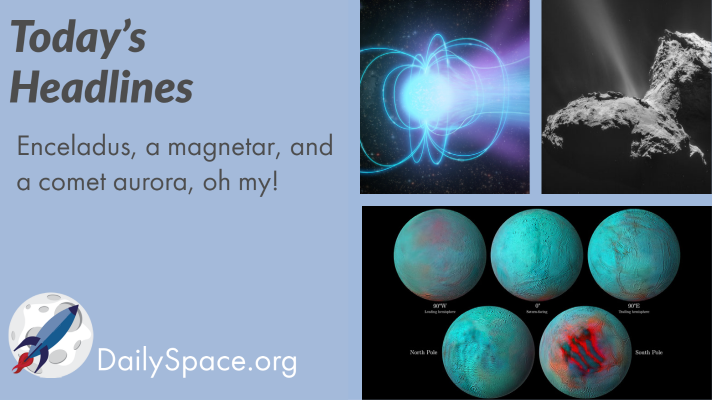
Sep 21, 2020 | Cassini, Comets, Daily Space, ESA, Neutron Stars / Pulsars, Saturn
Cassini data is still providing good science, and researchers recently found out that the northern hemisphere of Enceladus has fresh ice! Plus scientists directly measured the distance to a magnetar, and comet 67P/Churyumov-Gerasimenko has an aurora.
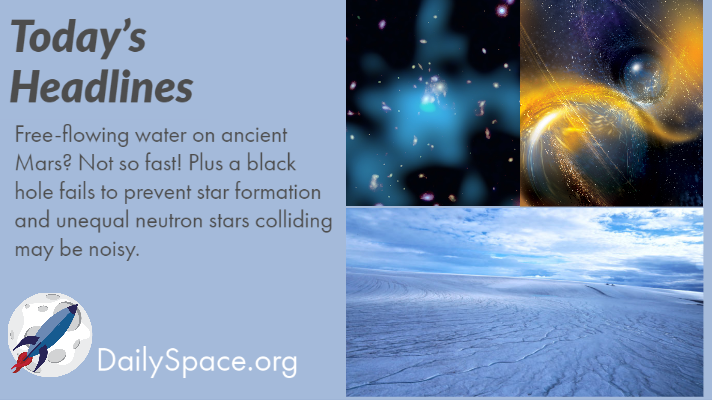
Aug 4, 2020 | Cosmology, Daily Space, Galaxies, Mars, Neutron Stars / Pulsars, Star Forming Region
Join us today as we talk about newly released research that suggests the waters on ancient Mars were subglacial and not free-flowing. Also, a black hole goes dormant and star formation goes wild. Meanwhile, computer models show that unequal neutron stars colliding may cause a big “bang” that can be detected on Earth.
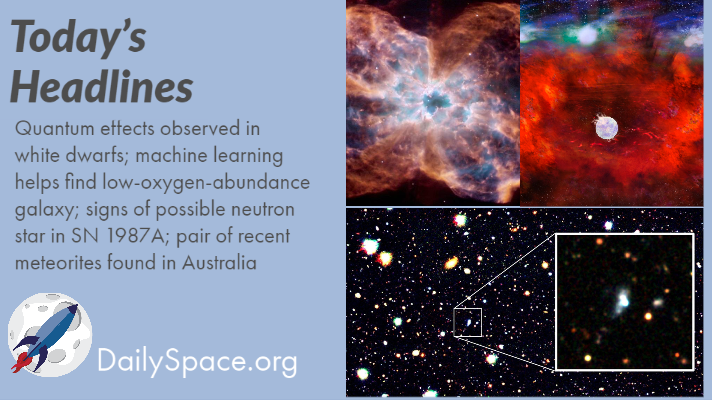
Aug 3, 2020 | Daily Space, Galaxies, Neutron Stars / Pulsars, Our Solar System, Quantum, Stars, Supernovae Remnants, White Dwarfs
Join us today as we look at how quantum mechanics and Einstein’s theory of general relativity work together in white dwarfs. Machine learning is used to find a galaxy with an extremely low abundance of oxygen. Scientists find signs of a neutron star in supernova 1987A. And researchers managed to locate two recently arrived meteorites in Australia with the help of fireball detection cameras.
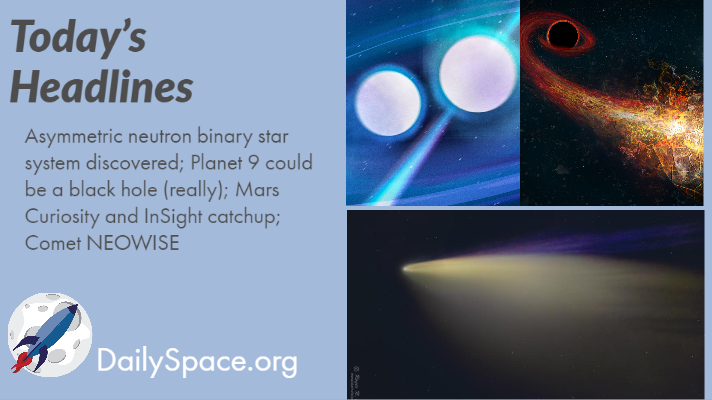
Jul 13, 2020 | Black Holes (Stellar), Comets, Cosmology, Curiosity, Daily Space, Mars, Neutron Stars / Pulsars, Our Solar System
Today’s news comes from all over and starts with a pair of pulsars headed toward merger in 500 million years. This system will help us understand August 2017 observations of a neutron star merger. From one high mass object to another, we turn to look at Avi Loeb’s new idea that Planet Nine might actually be a primordial black hole, what to look for if it is. We also catch up on Mars and its current robot explorers: InSight and Curiosity. Finally, we discuss how to see naked eye comet NEOWISE in the evening sky.
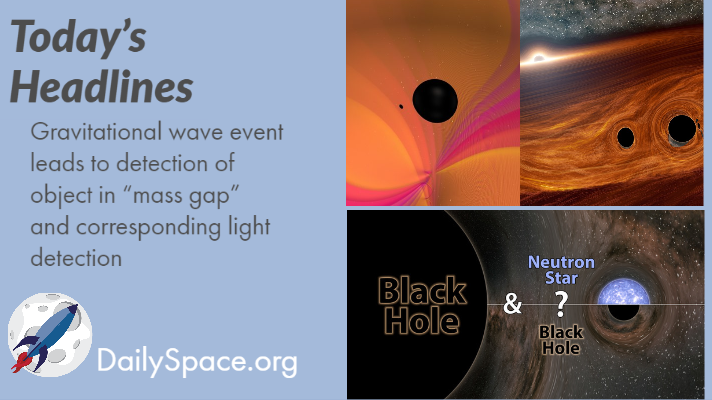
Jun 25, 2020 | Daily Space, Neutron Stars / Pulsars, Supermassive Black Holes
For today, both stories are related to the detection of gravitational wave events and are believed to be caused by the merger of massive objects far off in the universe.








 We record most shows live, on Twitch. Follow us today to get alerts when we go live.
We record most shows live, on Twitch. Follow us today to get alerts when we go live.